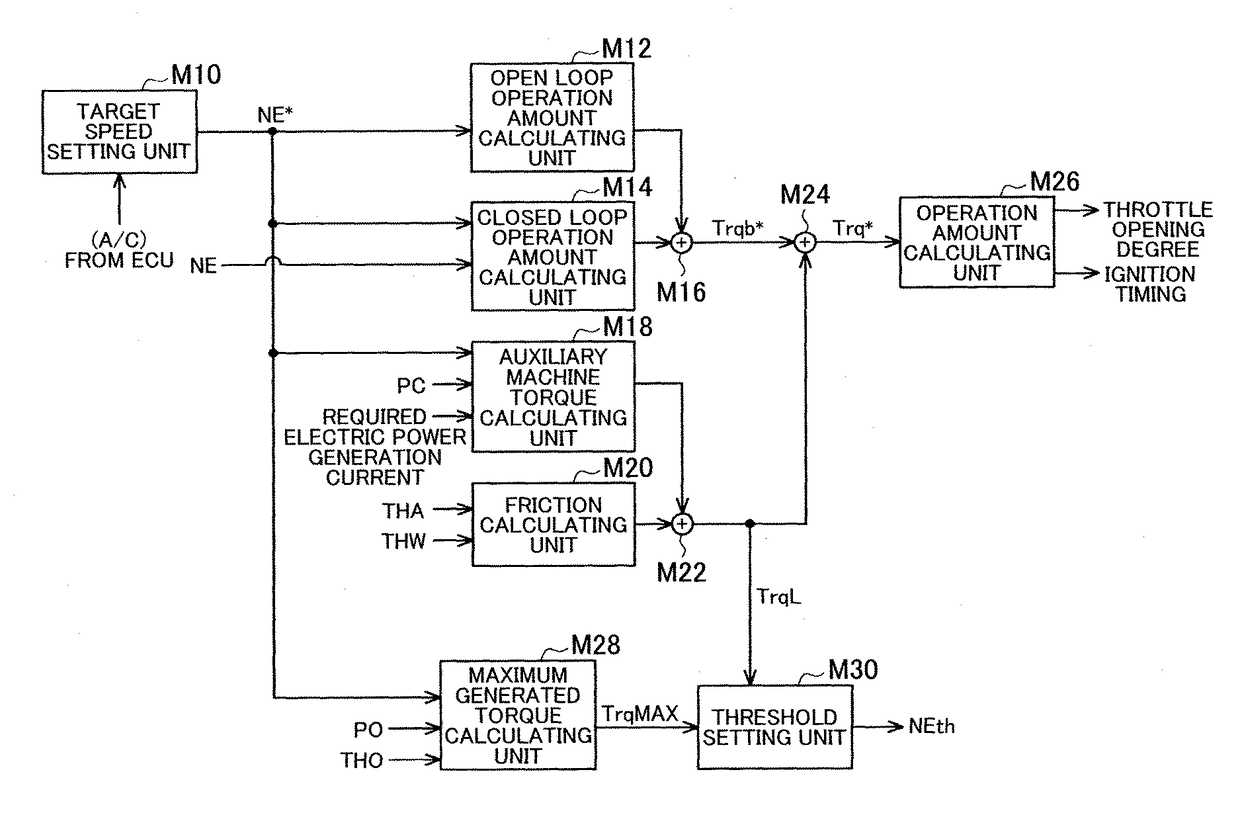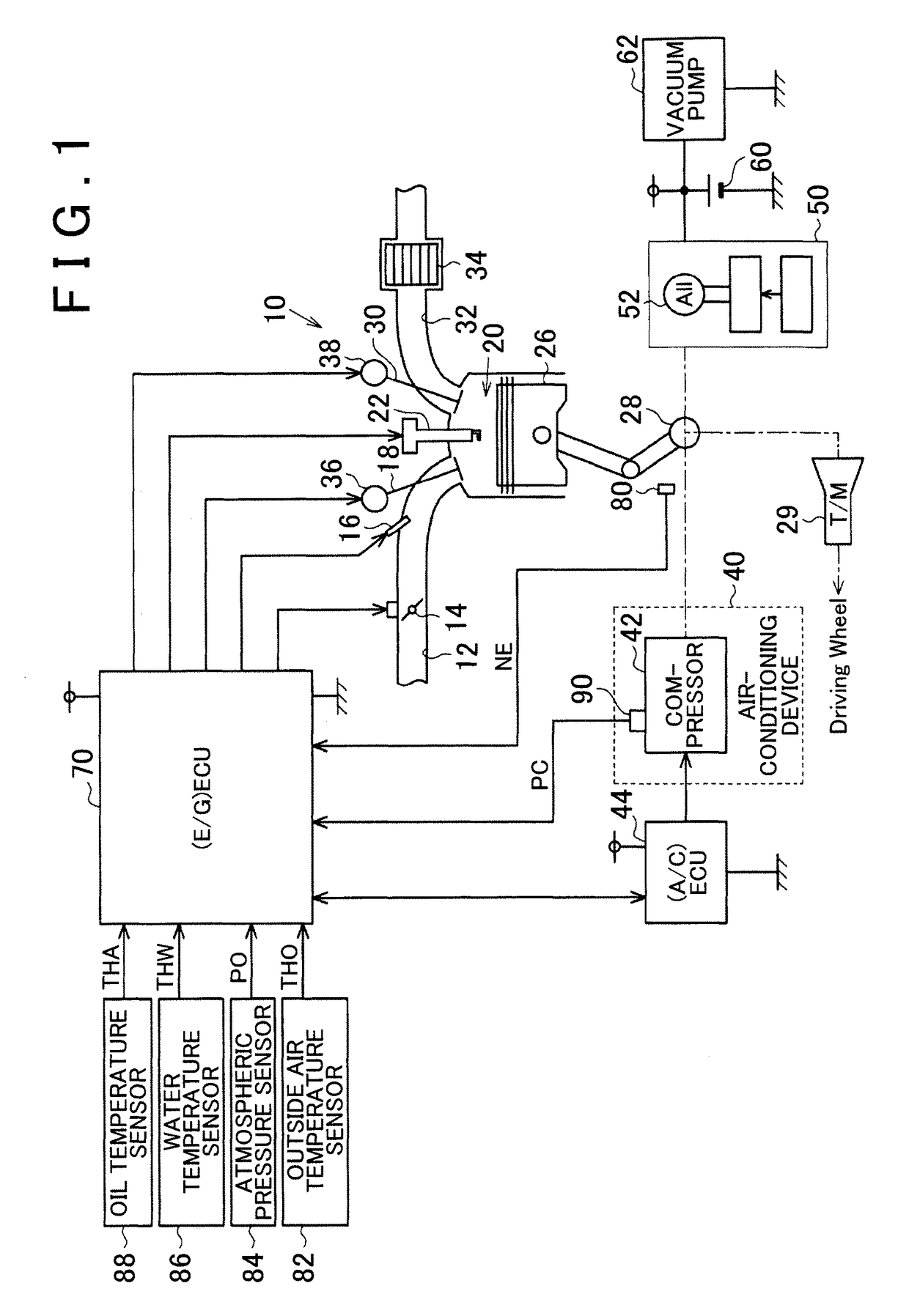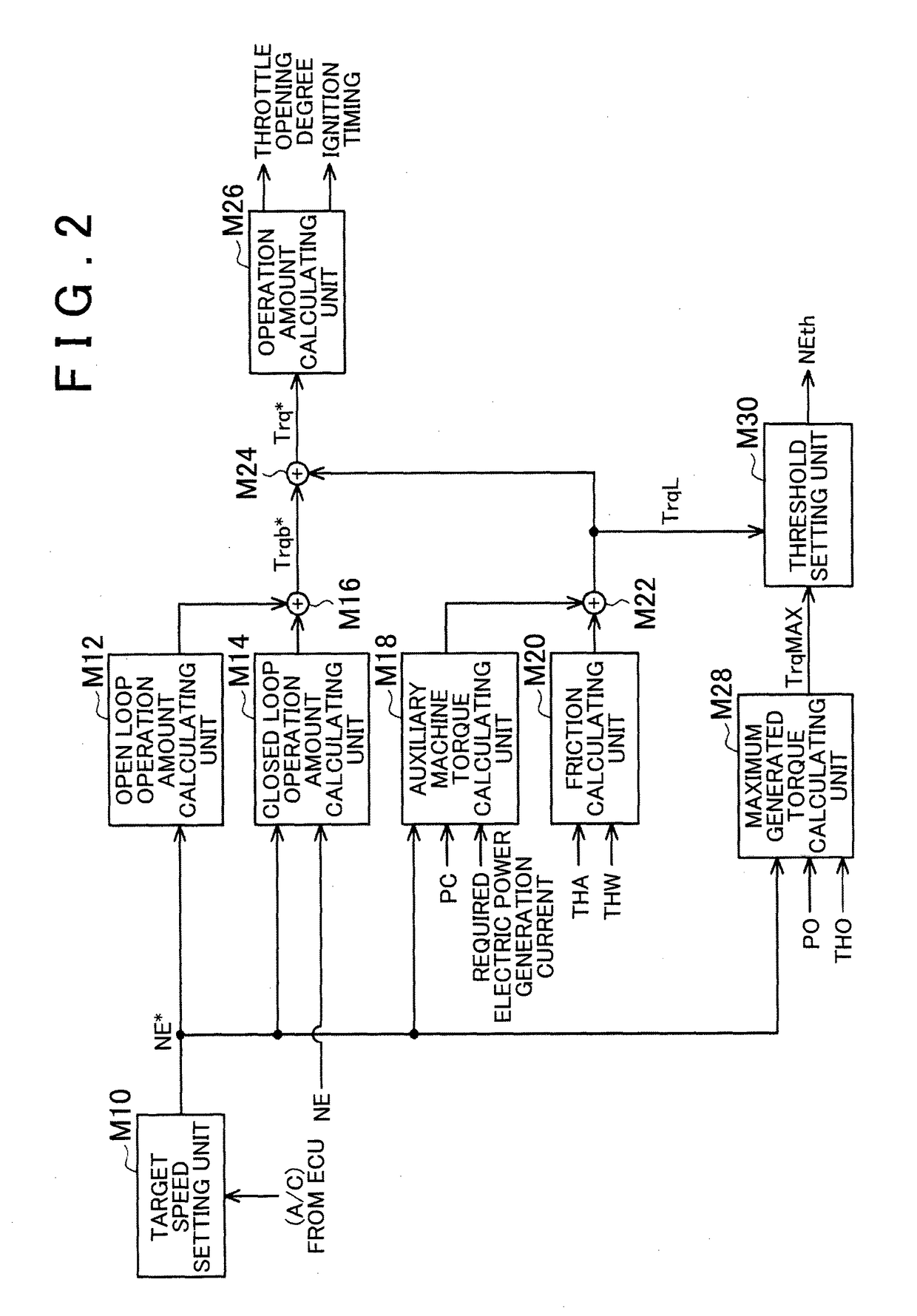Control device for internal combustion engine
a control device and internal combustion engine technology, applied in electric control, vehicle heating/cooling devices, vehicle components, etc., can solve the problems of difficult to restore the rotation the internal combustion engine is to be stopped, and the crankshaft speed of the internal combustion engine is rapidly dropped, so as to prevent the torque of the auxiliary machin
- Summary
- Abstract
- Description
- Claims
- Application Information
AI Technical Summary
Benefits of technology
Problems solved by technology
Method used
Image
Examples
first embodiment
[0022]Hereinafter, a first embodiment of a rotation speed control device for an internal combustion engine will be described in detail with reference to accompanying drawings.
[0023]An internal combustion engine 10 that is illustrated in FIG. 1 is a low-displacement (for example, “1,500 cc” or less) engine. A throttle valve 14 is disposed in an intake passage 12 of the internal combustion engine 10. The throttle valve 14 adjusts the flow path area of the intake passage 12. In the intake passage 12, a fuel injection valve 16 is disposed downstream from the throttle valve 14. An air-fuel mixture of the air that is suctioned into the intake passage 12 and the fuel that is injected by the fuel injection valve 16 is suctioned into a combustion chamber 20 as a result of the opening of an intake valve 18. A spark plug 22 is disposed in the combustion chamber 20. The air-fuel mixture that is suctioned into the combustion chamber 20 is combusted when the spark plug 22 performs an ignition ope...
second embodiment
[0058]Hereinafter, a second embodiment of the rotation speed control device for an internal combustion engine will be described with reference to accompanying drawings. The following description will focus on how the second embodiment differs from the first embodiment.
[0059]In the first embodiment described above, the predetermined speed NEth is set to one of the reference value B and the anti-stall value A. In this embodiment, however, the predetermined speed NEth is continuously changed in accordance with the value that is obtained by subtracting the load torque TrqL from the maximum torque TrqMAX. Specifically, a continuously increasing value is set as the predetermined speed NEth as the value that is obtained by subtracting the load torque TrqL from the maximum torque TrqMAX decreases.
[0060]FIG. 5A illustrates how the maximum torque TrqMAX and the load torque TrqL change, and FIG. 5B illustrates how the rotation speed NE and the predetermined speed NEth change. In this embodimen...
PUM
 Login to View More
Login to View More Abstract
Description
Claims
Application Information
 Login to View More
Login to View More - R&D
- Intellectual Property
- Life Sciences
- Materials
- Tech Scout
- Unparalleled Data Quality
- Higher Quality Content
- 60% Fewer Hallucinations
Browse by: Latest US Patents, China's latest patents, Technical Efficacy Thesaurus, Application Domain, Technology Topic, Popular Technical Reports.
© 2025 PatSnap. All rights reserved.Legal|Privacy policy|Modern Slavery Act Transparency Statement|Sitemap|About US| Contact US: help@patsnap.com



